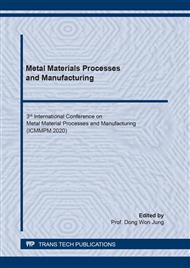p.117
p.123
p.131
p.137
p.147
p.153
p.163
p.169
p.177
Relationship Study and Primary Application between Gas Permeability and Crack State on Bridge Joint Concrete
Abstract:
For evaluating the crack state on solid bridge joint on site, the relationship between gas permeability and crack width of joint concrete is studied both on material and structural levels in this article. In laboratory tests, gas permeability tests on concrete samples with macrocrack are performed, the relationship between the relative gas permeability rate k/k0 and the relative variation of crack width ac is established combining with regression analysis, the fitting curve equation is . when ac increases by 1.125×10-2 mm, the gas permeability increases about 10 times compared with the initial state. In field tests, “pulse tests” are performed on bridge joint based on 3 embedded pulse probes to measure the evolution of gas permeability during bridge operation. The results show, firstly, the gas permeability of joint concrete are in the order of 10-16~10-19 m2, which indicates a good compaction performance; Secondly, an order of magnitude increase of gas permeability of one probe in different ages, or the fact that the gas permeability at one position in solid joint is obviously larger than the other positions, these phenomena indicate the existence of original defects, or the possibility of macrocrack appearance from microcracks, and the crack width increases by about 0.01 mm.
Info:
Periodical:
Pages:
153-161
Citation:
Online since:
January 2021
Authors:
Keywords:
Price:
Сopyright:
© 2021 Trans Tech Publications Ltd. All Rights Reserved
Share:
Citation:


